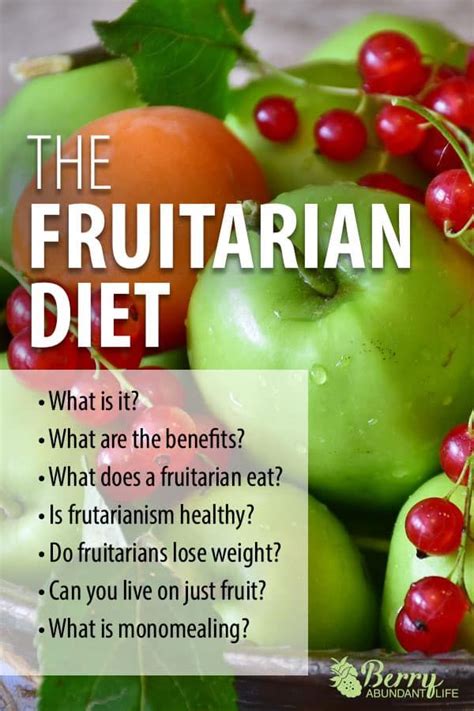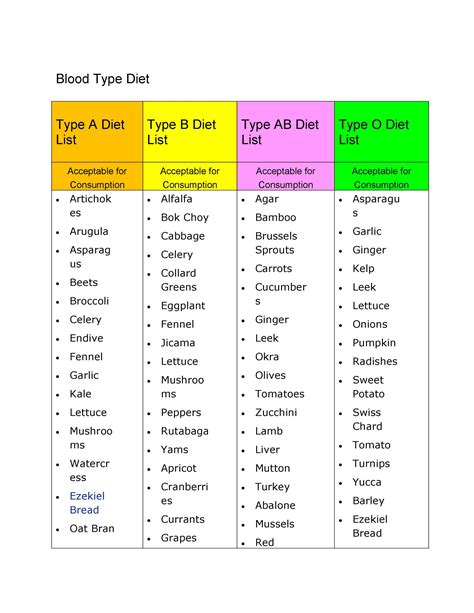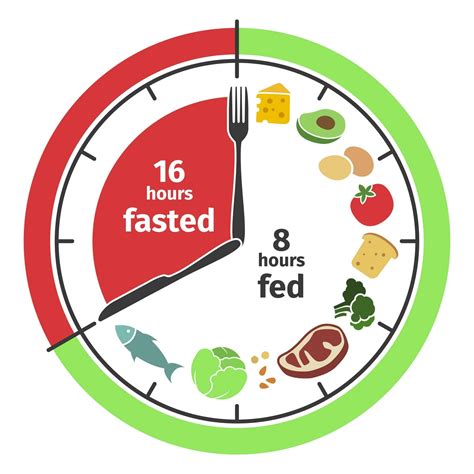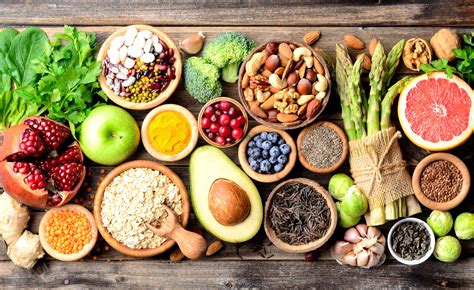Discover the Fruitarianism Diet, its benefits, key principles, and how to transition smoothly. Learn common mistakes to avoid for a successful fruit-based diet.
What is Fruitarianism Diet?
Contents
Fruitarianism diet is a type of diet that primarily consists of fruits and other plant-based foods. It is a subset of veganism and emphasizes the consumption of raw and ripe fruits, as well as nuts and seeds. The main idea behind the fruitarianism diet is to consume food that is obtained from plants without causing any harm to them. Therefore, followers of this diet refrain from consuming animal products or any processed foods.
Proponents of fruitarianism diet believe that consuming a diet solely based on fruits and plant-based foods can lead to not only physical health benefits but also spiritual and ethical advantages. They believe that such a diet can improve overall well-being, connect them to nature, and promote compassion and sustainability.
In addition to fruits, some fruitarianism diets also include other plant-based foods such as leafy greens, vegetables, and grains in small amounts. However, the primary focus remains on consuming a large variety of fresh fruits in their natural state to derive the most nutritional benefits.
It’s important to note that fruitarianism diet is not without its criticisms and risks, as it can be difficult to obtain all essential nutrients from a diet that is primarily based on fruits alone. Therefore, it is crucial for individuals considering this diet to thoroughly research and consult with a health professional to ensure that they are meeting their nutritional needs.
Benefits of Fruitarianism Diet
One of the main benefits of a fruitarianism diet is the high intake of nutrients and antioxidants from a variety of fruits. Fruits are rich in essential vitamins, minerals, and phytochemicals that support overall health and well-being. Additionally, the high fiber content in fruits can aid in digestion and promote a healthy gut microbiome.
Another benefit of a fruitarianism diet is the potential for weight loss and maintenance. Many fruits are low in calories and high in water content, which can help individuals feel full and satisfied while consuming fewer calories. This can be particularly beneficial for those looking to manage their weight or improve their overall eating habits.
Furthermore, a fruitarianism diet can contribute to improved hydration levels. Fruits are naturally high in water, and consuming a variety of fruits can contribute to overall hydration. Proper hydration is essential for numerous bodily functions, including temperature regulation, nutrient transport, and waste elimination.
Additionally, a fruitarianism diet can be sustainable and environmentally friendly. By focusing on consuming a diet primarily consisting of fruits, individuals can reduce their environmental footprint, as fruits generally require fewer resources to produce compared to other animal-based or processed foods. This can be an appealing factor for those looking to align their dietary choices with their environmental values.
In conclusion, a fruitarianism diet offers numerous potential benefits, including increased nutrient intake, support for weight management, improved hydration, and a sustainable approach to eating. However, it’s important to note that individual needs and preferences vary, and consulting with a healthcare professional or registered dietitian is recommended before making any significant dietary changes.
How to Transition to Fruitarianism Diet
Transitioning to a Fruitarianism Diet can be a challenging but rewarding process. It involves eliminating all processed and cooked foods from your diet and consuming primarily fruits, nuts, seeds, and some vegetables. One key principle of this diet is to consume food in its most natural state, in order to maximize nutritional benefits and promote overall health. If you are considering transitioning to a Fruitarianism Diet, there are a few key steps you can take to make the process smoother and more sustainable.
First and foremost, it’s important to do thorough research on the Fruitarianism Diet and understand the principles behind it. This will help you make informed decisions and set realistic expectations for the transition process. It’s also important to consult with a healthcare professional or nutritionist to ensure that the Fruitarianism Diet is suitable for your individual health needs and goals.
Another important step in transitioning to a Fruitarianism Diet is to gradually reduce and eliminate processed and cooked foods from your diet. This can be done by gradually increasing the proportion of fruits and raw foods in your meals, while reducing or eliminating processed foods and animal products. This gradual approach can help your body adjust to the new diet and minimize potential digestive discomfort or nutritional deficiencies.
It’s also essential to explore and experiment with a variety of fruits, vegetables, nuts, and seeds to ensure that you are getting a diverse range of nutrients on a Fruitarianism Diet. Incorporating a wide variety of produce can also help keep meals interesting and enjoyable, preventing feelings of deprivation or monotony.
Finally, it’s important to listen to your body throughout the transition process and make adjustments as needed. Pay attention to how certain foods make you feel and make adjustments to your diet accordingly. Remember that every individual is different, and what works for one person may not work for another. By being mindful and adaptable, you can ensure a successful transition to a Fruitarianism Diet that supports your overall health and well-being.
Key Principles of Fruitarianism Diet
Key Principles of Fruitarianism Diet
Fruitarianism diet is based on the belief that consuming only fruits and plants is the most natural and pure way to eat. When following a fruitarian diet, there are key principles that one must adhere to in order to ensure a balanced and healthy way of eating.
First and foremost, it is essential to consume a variety of fruits in order to obtain all the necessary nutrients. Different fruits contain different vitamins, minerals, and antioxidants, so it is important to include a wide range of fruits in your diet to ensure that you are getting everything your body needs.
Secondly, it is important to prioritize organic and locally grown fruits whenever possible. Organic fruits are free from harmful pesticides and chemicals, and locally grown fruits are often fresher and contain higher nutrient levels than fruits that have been transported long distances.
Another key principle of fruitarianism diet is to eat fruits that are in season. Fruits that are in season are not only more affordable but also taste better and contain higher nutrient levels. By eating seasonally, you can also support local farmers and reduce your environmental impact.
| Key Principles of Fruitarianism Diet |
|---|
| Consume a variety of fruits |
| Prioritize organic and locally grown fruits |
| Eat fruits that are in season |
Finally, it is crucial to listen to your body and make sure that you are getting enough calories and nutrients. Fruitarianism diet can be low in protein, fat, and certain vitamins and minerals, so it is important to monitor your nutrient intake and make adjustments to your diet as needed.
By following these key principles of fruitarianism diet, you can ensure that you are eating a balanced and healthy diet that supports your overall well-being.
Common Mistakes to Avoid on Fruitarianism Diet
How to do Fruitarianism Diet?
Many people who are new to the Fruitarianism Diet make the mistake of not consuming enough variety of fruits. It’s important to include a wide range of fruits in your diet to ensure you are getting all the essential nutrients your body needs. Instead of just sticking to one or two types of fruits, try to mix it up and incorporate different fruits into your meals and snacks.
Another common mistake is not drinking enough water. While fruits do contain water, it’s still important to stay properly hydrated throughout the day. Make sure to drink plenty of water to prevent dehydration and to help your body function properly. This will also help with digestion and overall energy levels.
Some people also make the mistake of not getting enough protein. While fruits are a great source of essential vitamins and minerals, they are not very high in protein. It’s important to include other protein-rich foods such as nuts, seeds, and legumes in your diet to ensure you are meeting your protein needs.
One of the most common mistakes people make on the Fruitarianism Diet is not properly planning their meals. It’s important to plan ahead and make sure you have enough fruits on hand to last throughout the week. Without proper planning, it’s easy to fall back into old eating habits or to reach for unhealthy convenience foods.
Lastly, some individuals make the mistake of not listening to their bodies. It’s important to pay attention to how your body feels and to make adjustments to your diet as needed. If you start feeling weak or fatigued, it may be a sign that you need to adjust your fruit intake or incorporate more variety into your diet.












